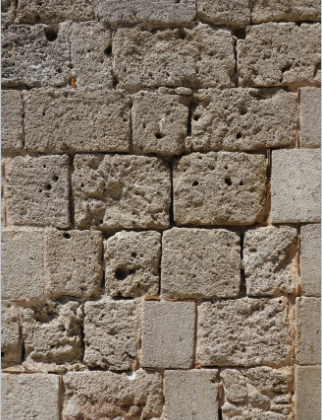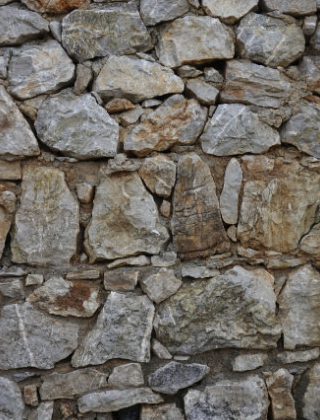A history linked to castles
To talk about castles is to talk about their construction, their defences, their typology, their maintenance and the origins of the Regne de València. Our mission is to recover the memory of something distant and stimulating.

What does a castle represent?
The image of castles is mostly associated with a defensive concept, with a question of attack and defence. However, this was an extraordinary and occasional situation. The castle was the site of complex daily activity. Castles were places of residence and spaces where the local population settled, taking advantage of advantageous geographical and natural conditions.
The governance of a castle was subject, depending on its size, to a strict distribution of functions that ensured its functioning. The feudal system had rules that marked the life of the lords and their subjects. And all this activity was centred on the lord of the castle, the symbol of the centre of power.
Moreover, castles were complex residences with a great variety of rooms, decorated and furnished. There were halls, bedrooms, kitchens, chapels, stables, dungeons, cisterns, pantries, cellars…

The origin of a castle
The construction of a castle was a very costly task that only rich lords, nobles and kings could afford. In order to start building a castle, a royal permit called “Permission to castle” was required, which was granted by the monarch.
The castle had to be designed for times of war and times of peace. This meant that it had to be easily supplied with food and other provisions. Water was a basic commodity and it was essential to have its own fountain or well, protected from a possible siege.
Construction techniques
Valencian castles were built in three different ways:

Ashlar
Well-worked quarried stones in blocks of different sizes. This system was unusual in the Kingdom of Valencia.

Masonry
Mortars of lime, stones and sand, used for the construction of walls. The mixture with larger stones was used for the lower parts.

Tapial
Formwork of varying widths filled with materials mixed with lime which, when subjected to drying and pressure, acquire great hardness. This is the most widespread system in Valencia.
Defensive elements
The construction of a castle had to combine defensive and residential tasks. With regard to the former, the master builder had to find the best way to distribute the walls and towers, as well as their most effective layout. Generally, the towers had to be placed at a sufficient distance from each other to allow them to be helped from each other. The distance of a bowshot was a common measure.
There were also towers outside the walls, the albarran towers, which allowed a better defence of the walls and which were connected to the enclosure by suspension bridges or some other system.
Likewise, the weakest part of a castle was its gates. It is not surprising that its occupants devised all kinds of defence methods to strengthen them against attack. The first was to flank it with towers to protect it and make it more difficult to approach the entrance. The gates were closed on hinges and barred with solid timbers. However, the use of rakes, drawbridges and moats helped to improve the defence of the access areas to the town or fortress.

Life in the castle
A castle was a building that was designed both for times of war and, above all, for periods of peace. In practice, they were fortified administrative centres from which the surrounding territory was controlled.
Likewise, the most important element for a castle was not necessarily the defences, but the elements that allowed the subsistence of its inhabitants. The supply of food and the storage of water were essential. Both were guaranteed by being able to grow crops and raise animals within the walled enclosure – which also included the population – and by the existence of cisterns for storing rainwater.
- The sieges
Most castles in the 13th century were impregnable and towns were completely walled, so the only way to conquer these enclaves was by siege, which could last for months.
Cutting off supplies, throwing dead animal carcasses inside the castle to spread disease among the population and poisoning or fouling the water supply that came through the rivers were common siege techniques.
During the siege, various assaults were carried out in order to weaken and destroy the defences of the town or castle. Until the introduction of gunpowder in the 14th century, the only way to carry out this action was by throwing projectiles (stones of varying sizes) which, when they hit the walls, eventually brought them down.
- Armament
In the late Middle Ages the most common weapons were swords, spears, bows and knives. The most powerful at a distance were crossbows.
A trained crossbowman, well stationed on the wall or in the tower, could wreak havoc on his enemies. To improve their effectiveness, the tips of the arrows were smeared with beeswax to penetrate the knights’ armour. Longbows, on the other hand, were used for long distances and were quicker to fire than crossbows. There were arrowheads prepared for every occasion (to pierce armour, to kill horses, etc.).
The Chronicle of King Jaume I has left us many passages describing many of the battles and sieges that the monarch carried out.
- Assault machines and techniques
Some of the most commonly used weapons were the blunderbuss (which launched projectiles high above the walls), the almajaneques (which fired projectiles at low altitude to break the walls and towers) and the manteletes (palisades with wheels that were used to approach the walls with protection and assault them).
The two instruments most commonly used to break down walls and ramparts were the much larger and more powerful blunderbusses/fundibulae, which appeared in the 12th century, and the smaller catapults, which were already used in ancient times.
If there was little chance of knocking down walls and towers, assault towers were built. These were wheeled wooden constructions that rose above the height of the walls. Their interior, which was several storeys high, was filled with assault troops. Once the tower was close to the wall, a lifting gate at the top allowed the soldiers to exit. At this point, hand-to-hand combat determined the conquest or loss of the position. Obviously it was not easy to bring a tower to the immediate vicinity of the walls. The defenders could set fire to them, attack them with their arrows, or make the ground uneven to prevent them from moving.
A very effective technique that was often used to break through defensive barriers was mining. Assailants would dig an underground tunnel to get under walls and towers. Once there, they would open up a wide space and prop it up with logs. They would then set fire to the wood to cause the roof to collapse and the defensive element above it to fall.
However, mining was very risky and difficult. In castles built on rock or with a moat, this was practically impossible. Round towers were better able to withstand mines than square towers, which were much weaker at the corners.